Ethereum is a decentralized blockchain network that has been live since 2015. What’s more, it’s the biggest platform for Web3 development, hosting over 4,000 decentralized applications (dapps) and 53+ million smart contracts. But what exactly is the Ethereum blockchain? And what are some of the most significant projects on this network? If you’d like to dive into the intricacies of Ethereum, join us in this 2024 guide as we explore the current state of the ecosystem!
Overview
We’ll start off by diving straight into the Ethereum ecosystem. In doing so, we’ll learn what Ethereum is, explore the benefits of this blockchain network, and cover the ecosystem’s roadmap for 2024 and the future. From there, we’re then going to list ten of the most significant projects on the blockchain, where we’ll include platforms like Uniswap, OpenSea, Curve Finance, and others. Lastly, to top things off, we’ll look into Ethereum development, where we’ll introduce you to the industry’s leading Web3 API provider: Moralis!
With Moralis’ Ethereum API suite, you can effortlessly integrate on-chain data and Web3 functionality into your projects with only single lines of code. Our dynamic and versatile suite features multiple APIs for various use cases, including the Wallet API, NFT API, Token API, and many others. As such, it doesn’t matter if you’re looking to build an NFT marketplace, Web3 wallet, portfolio tracker, or any other blockchain-based platform; Moralis has got you covered.
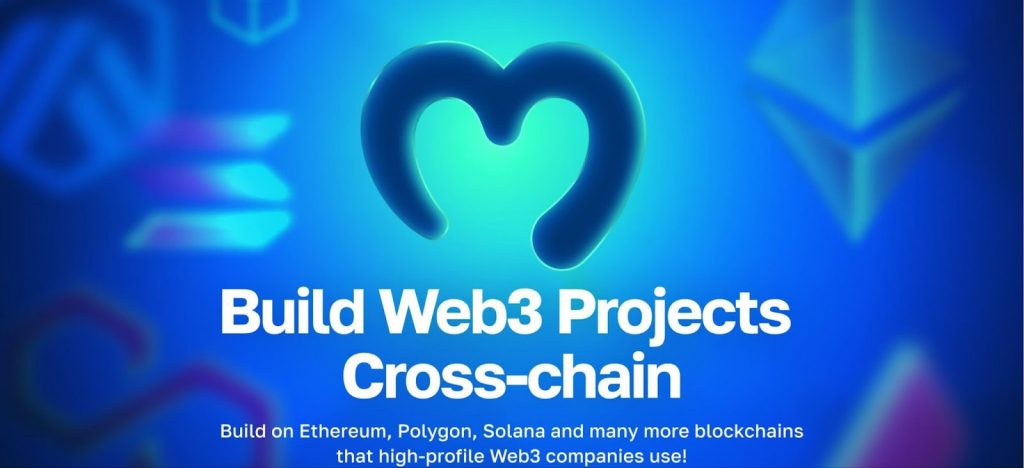
So, if you want to start building projects for the Ethereum ecosystem, make sure to sign up with Moralis. You can create an account for free, and you’ll get instant access to our industry-leading ETH API suite!
What is the Ethereum Ecosystem?
Ethereum is a decentralized, open-source, and distributed peer-to-peer (P2P) network powered by blockchain technology. The Ethereum network launched in 2015, and it’s the most significant blockchain for smart contract and decentralized application (dapp) development. In fact, as of 2024, the Ethereum ecosystem hosts over 4,000 dapps, 53+ million smart contracts, and 96+ million accounts with an Ether (ETH) balance!
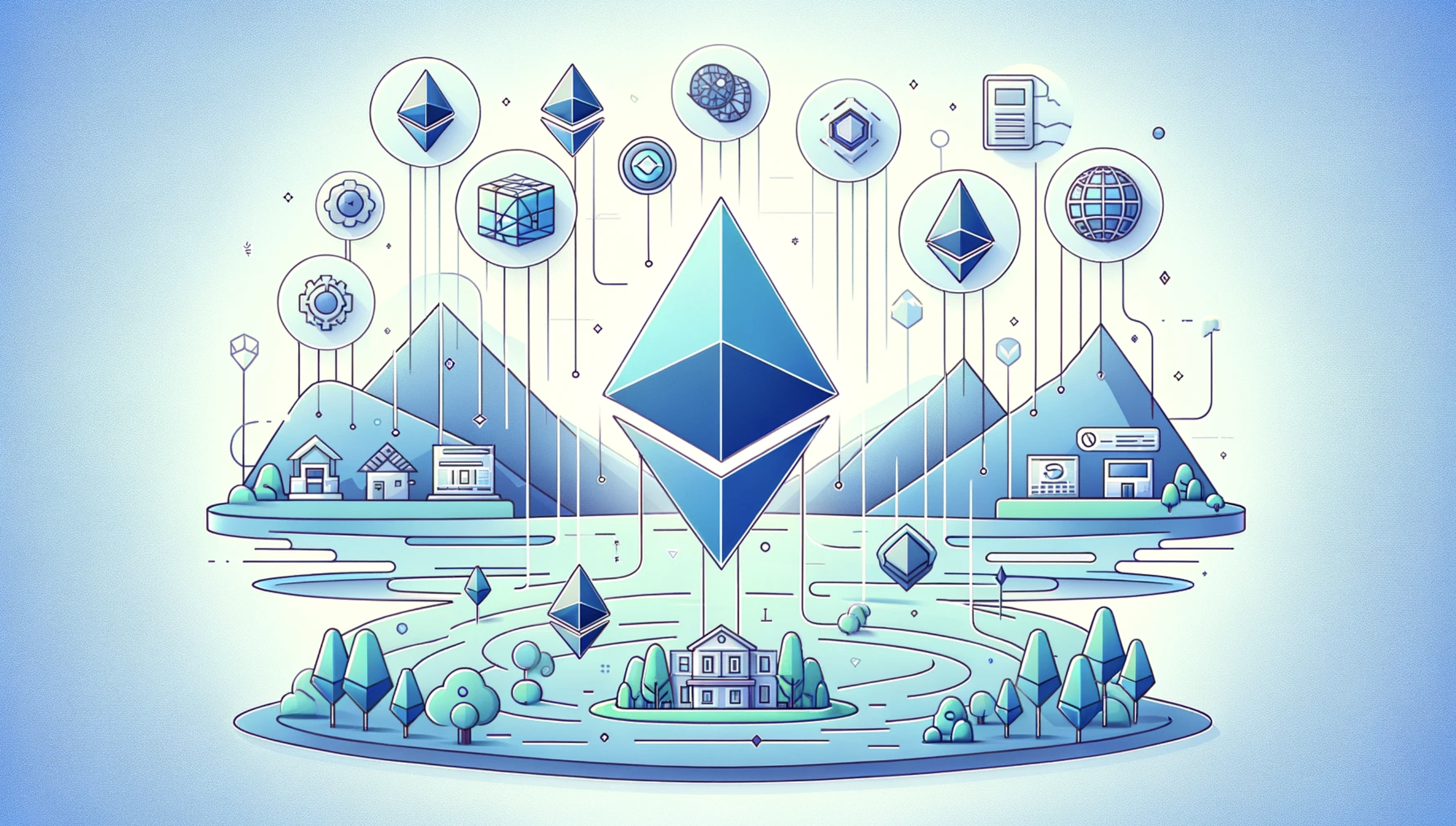
At the time of launch, Ethereum operated through a proof-of-work (PoW) consensus mechanism to secure the network. However, during the advent of The Merge in 2022, Ethereum shifted from PoW to proof-of-stake (PoS). Consequently, validators now stake the network’s native token, ETH, to become eligible to verify blocks.
To further understand the Ethereum blockchain, let’s briefly explore four prominent features of this network:
- Ether (ETH): ETH is the native token of Ethereum, and it plays an essential role within the ecosystem. Apart from being a medium of exchange, ETH has additional utility. For instance, it’s used to pay for gas on the network, and it’s also the network’s staking token.
- Smart Contracts: Smart contracts are self-executing programs running on Ethereum and similar blockchains. These programs automatically execute when predetermined conditions are met, making them great for automating transactions and other business logic.
- Decentralized Applications (Dapps): Dapps represent a new generation of web apps based on blockchain networks, smart contracts, and other decentralized technologies. Since these applications are decentralized, they are free from the control and influence of central authorities.
- Ethereum Virtual Machine (EVM): EVM is a virtual runtime environment that manages the state of the Ethereum network and executes smart contract code. It operates as a decentralized computer running on Ethereum’s global network of nodes.
That covers the basics of Ethereum. Let’s now explore some of the benefits of using and building on the ecosystem in 2024!
Benefits of Ethereum
There are many benefits of working with the Ethereum ecosystem in 2024, and in this section, we’ll briefly explore three prominent examples:
- Decentralization & Security: Ethereum is fully decentralized, eliminating the need for intermediaries and issues associated with single points of failure. As such, when building on Ethereum, you can leverage the robust security of the network.
- Extensive Ecosystem: Ethereum hosts the most extensive ecosystem of dapps in 2024, and it’s home to some of the industry’s biggest projects. Consequently, when building on Ethereum, you can tap into existing projects and seamlessly onboard customers who are already using platforms on the network.
- Community & Developer Tools: Ethereum boasts a large community of enthusiasts, developers, and other stakeholders committed to improving the network. What’s more, there are many developer tools and languages – including Moralis, Remix, Solidity, etc. – making Ethereum dapp development a breeze.
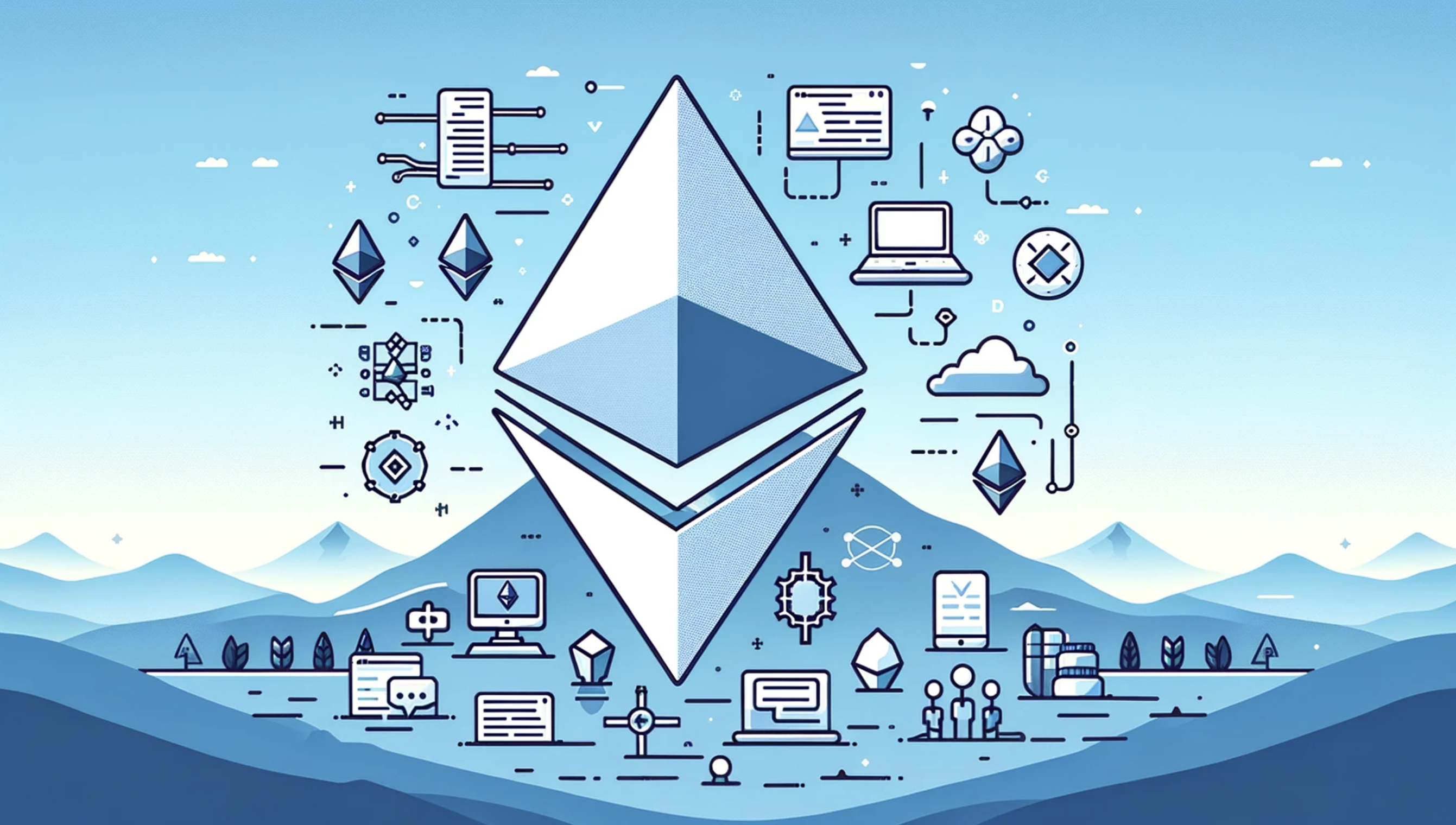
Now, with an overview of some of the benefits of Ethereum, let’s explore the ecosystem’s future by diving into its roadmap for 2024!
Ethereum Roadmap 2024
In December 2023, we got an update from Ethereum’s co-founder Vitalik Buterin outlining the 2024 roadmap for the network. Down below, you’ll find a brief summary of the plan divided into six parts:
- The Merge: The Merge occurred in September 2022, and this part of the roadmap encompasses Ethereum’s goal to maintain a simple yet robust PoS consensus mechanism during 2024.
- The Surge: This part outlines the network’s aim to enhance scalability by achieving a combined throughput of 100,000 transactions per second across Ethereum and ETH layer-2 networks.
- The Scourge: The Scourge encompasses Ethereum’s focus on mitigating risks associated with maximum extractable value (MEV), rollups, and liquidity staking pools to address concerns related to economic centralization.
- The Verge: With The Verge, Ethereum aims to facilitate more accessible block validation and improve the efficiency of this process. As the ecosystem experiences increased adoption, this optimization becomes crucial for maintaining Ethereum’s scalability.
- The Purge: The Purge outlines Ethereum’s attempts to make the protocol more developer-friendly. The goal here is to enhance the overall functionality and usability of the Ethereum ecosystem.
- The Splurge: The Splurge specifies additional elements needed for Ethereum’s overall growth. This includes things such as sustainability, which reflects the network’s commitment to nurturing a vibrant community of both users and developers.
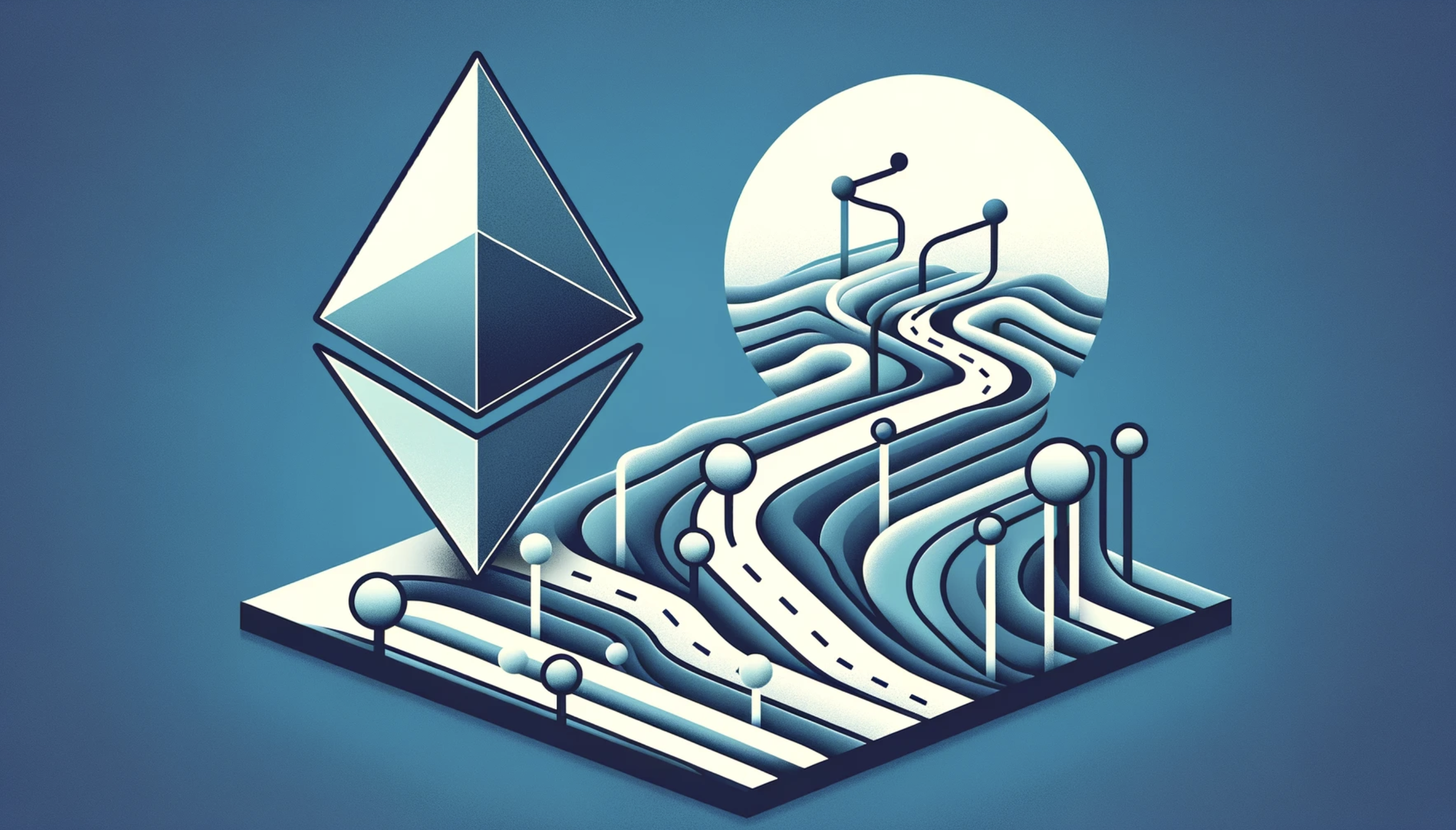
Dapps on Ethereum in 2024
Ethereum hosts the industry’s most extensive ecosystem of dapps, featuring thousands and thousands of platforms. And due to the sheer size of this network, we can’t possibly cover all projects in this section. As such, we have instead narrowed it down to a list of ten industry-leading platforms to give you a few examples:
| Dapps on Ethereum in 2024 | |||
| Name: | Description: | ||
| 1. Uniswap | Uniswap is the industry’s leading decentralized exchange (DEX) for swapping cryptocurrency tokens. | ||
| 2. 1inch | 1inch is a DEX aggregator that aims to give users the best prices and lowest fees for their on-chain transactions. | ||
| 3. Curve Finance | Curve Finance is an automated market maker (AMM) DEX focusing on stablecoins like USDC, USDT, DAI, etc. | ||
| 4. Lido | Lido is a liquid staking solution for the Ethereum network, allowing users to seamlessly stake any amount of PoS assets in return for rewards. | ||
| 5. OpenSea | OpenSea is the biggest Web3 marketplace for non-fungible tokens (NFTs), enabling users to create, sell, and buy NFTs easily. | ||
| 6. Blur | Blur is a user-friendly decentralized NFT marketplace that allows users to seamlessly swap NFTs. | ||
| 7. MetaMask | MetaMask is the industry’s leading, self-custodial Web3 wallet with over 30 million monthly users worldwide. | ||
| 8. Rainbow | Rainbow is a non-custodial crypto wallet that allows users to seamlessly store and manage their cryptocurrencies and NFTs. | ||
| 9. Axie Infinity | Axie Infinity is a Pokemon-like play-to-earn (P2E) game where players gather, grow, breed, and battle creatures called ”Axies.” | ||
| 10. Illuvium | Illuvium is an open-world, P2E, role-playing fantasy game where players collect and battle creatures known as ”Illuvials.” | ||
If you’d like to explore additional platforms on the network, check out our full list of top Ethereum dapps on Moralis’ Web3 Wiki!
How to Build an Ethereum Ecosystem Project in 2024
If you want to build dapps for the Ethereum ecosystem in 2024, then your best bet is to leverage Moralis’ ETH API suite!
But what is Moralis?
Moralis is an industry-leading Web3 API provider that gives you the tools to build sophisticated blockchain-based projects. And with only single lines of code, you can use our APIs to integrate on-chain data and Web3 functionality into your dapps without breaking a sweat!
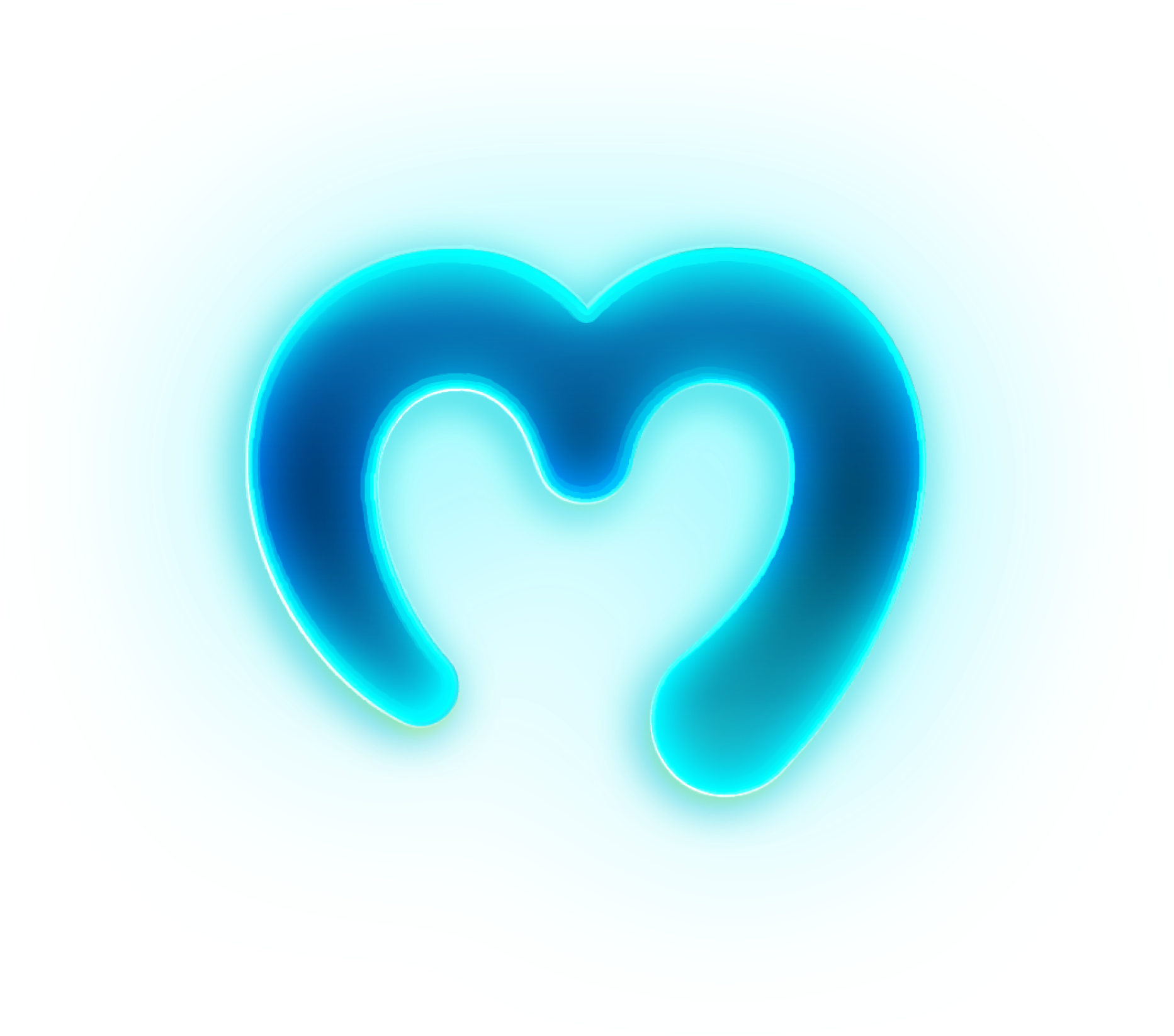
In our diverse and versatile suite of APIs, you’ll find many prominent interfaces for various use cases, including the Wallet API, NFT API, Blockchain API, and many others. Consequently, it doesn’t matter if you’re building a crypto wallet, NFT marketplace, block explorer, or any other Web3 platform; Moralis has the tools for you.
What’s more, existing projects on Ethereum should also make sure to check our premier APIs, as Moralis, on average, saves 83% of projects’ go-to-market time, has industry-leading response times, and is cross-chain compatible out of the box!
Nevertheless, to further highlight the power of Moralis’ Web3 APIs, we’ll take the following subsections to introduce you to five of our interfaces!
Wallet API
Moralis’ Wallet API is the ultimate tool for building Web3 wallets and integrating wallet functionality into dapps. With only single lines of code, you can use the Wallet API to seamlessly get the native balance, NFT balance, transaction history, and much more of any wallet!
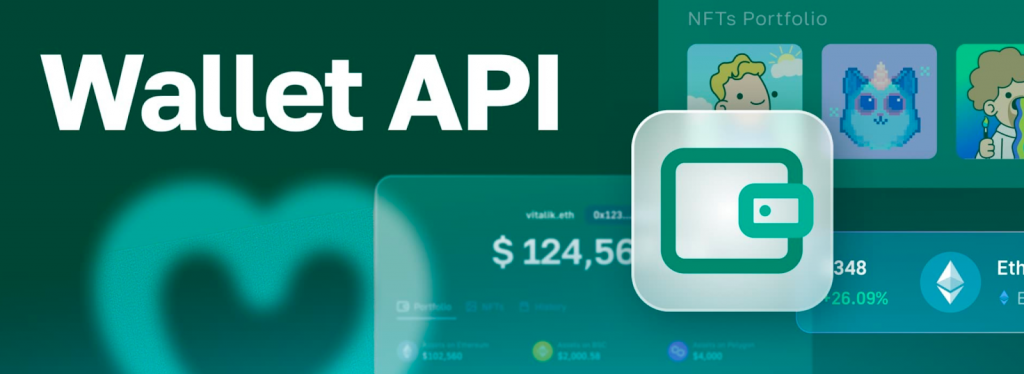
What’s more, the Wallet API boasts impressive compatibility with over 500 million addresses across an array of the most prominent blockchains, including but not limited to Ethereum, Polygon, and BNB Smart Chain (BSC).
To showcase the power and accessibility of this tool, here’s an example of how you can fetch the NFT balance of any wallet using the getWalletNFTs() endpoint:
const response = await Moralis.EvmApi.nft.getWalletNFTs({ "chain": "0x1", "address": "0xff3879b8a363aed92a6eaba8f61f1a96a9ec3c1e" }); NFT API
Moralis’ cross-chain NFT API supports 3+ million NFT collections across 10+ EVM-compatible blockchain networks. This includes everything from established projects like Pudgy Penguins and CryptoPunks to tokens that dropped just seconds ago!
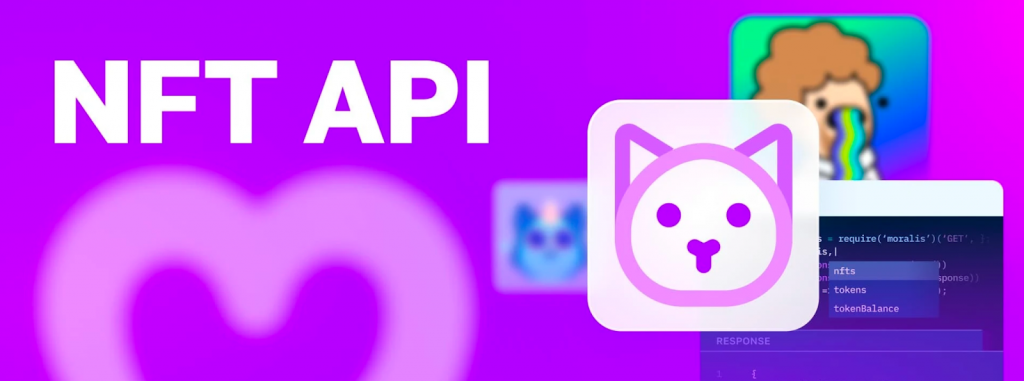
With the NFT API, you can effortlessly get metadata, transfers, optimized image previews, on-chain prices, and much more for any NFT. For instance, here’s an example of how you can get the metadata of any NFT with the getNFTMetadata() endpoint:
const response = await Moralis.EvmApi.nft.getNFTMetadata({ "chain": "0x1", "address": "0xb47e3cd837dDF8e4c57F05d70Ab865de6e193BBB", "tokenId": "1" }); Token API
The Token API is the ultimate tool for ERC-20 token data, and this API supports every single token across all the most significant blockchains. This includes everything from stablecoins like DAI and USDT to meme coins like Shiba Inu.
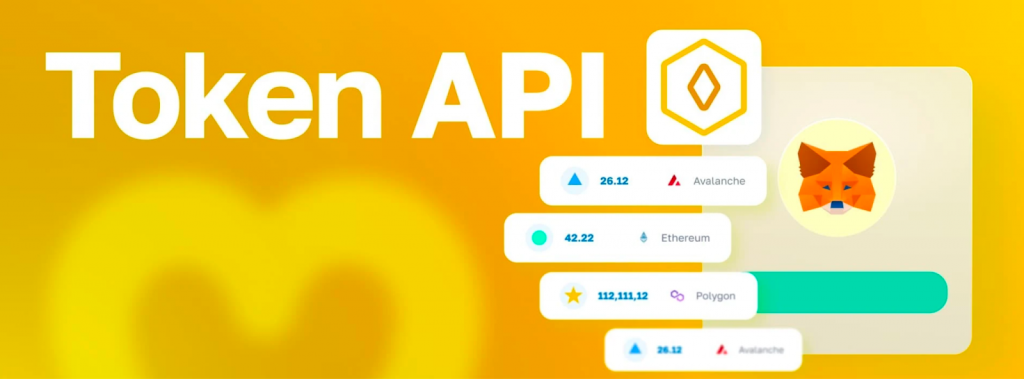
With Moralis’ Token API, you can easily fetch and integrate token prices, balances, transfers, and more into your dapps. For example, here’s how easy it is to get the price of a token using the getTokenPrice() endpoint:
const response = await Moralis.EvmApi.token.getTokenPrice({ "chain": "0x1", "address": "0x7d1afa7b718fb893db30a3abc0cfc608aacfebb0" }); Blockchain API
Moralis’ industry-leading Blockchain API is the ultimate tool for seamlessly unlocking the power of both raw and decoded blockchain data. With only single API calls, you can fetch smart contract logs, events, block data, and more!

To highlight the accessibility of the Blockchain API, here’s the getBlock() endpoint in action, showing you how to get the data of any block:
const response = await Moralis.EvmApi.block.getBlock({ "chain": "0x1", "blockNumberOrHash": "18541416" }); Streams API
The Streams API is the perfect tool for setting up Web3 alerts. With a few lines of code, you can use this API to create streams and get real-time updates sent directly to your project’s backend via Web3 webhooks as soon as something important happens on-chain!
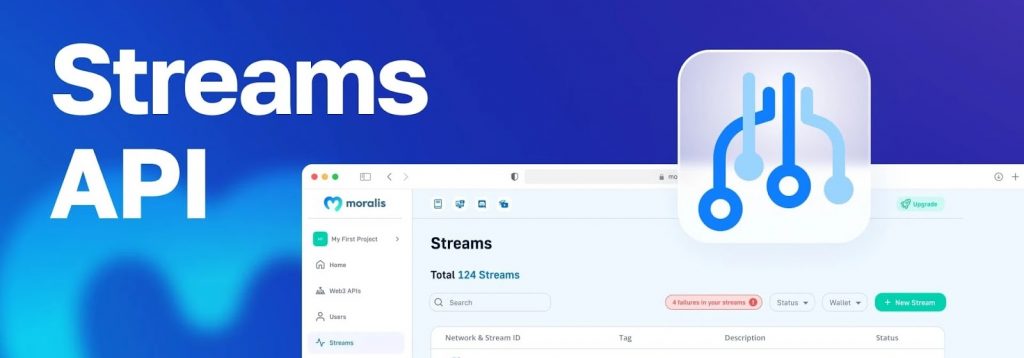
You can set up a stream in three simple steps:
- Create a
streamobject, add the chains you’re interested in, specify what events you want to monitor, and add a webhook destination:
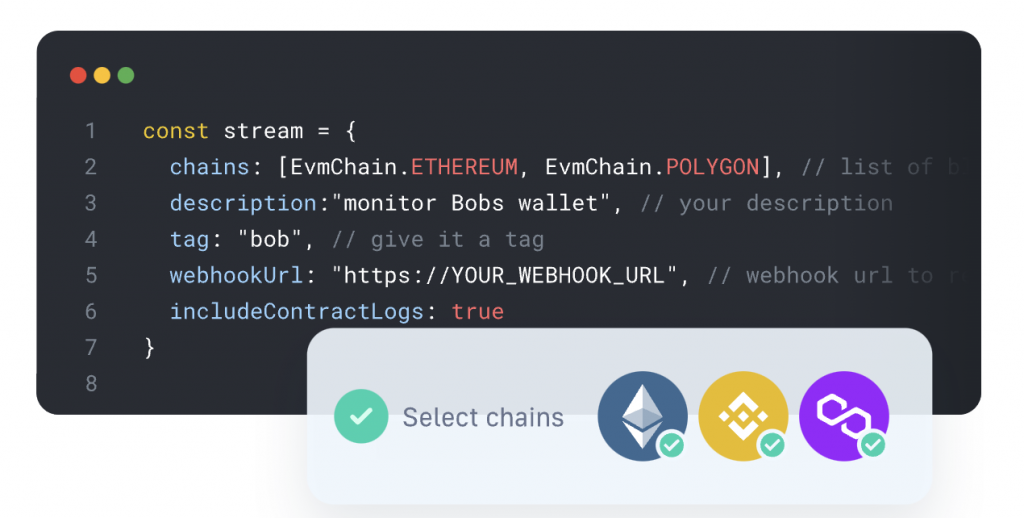
- Set up your configured stream using the
add()method:
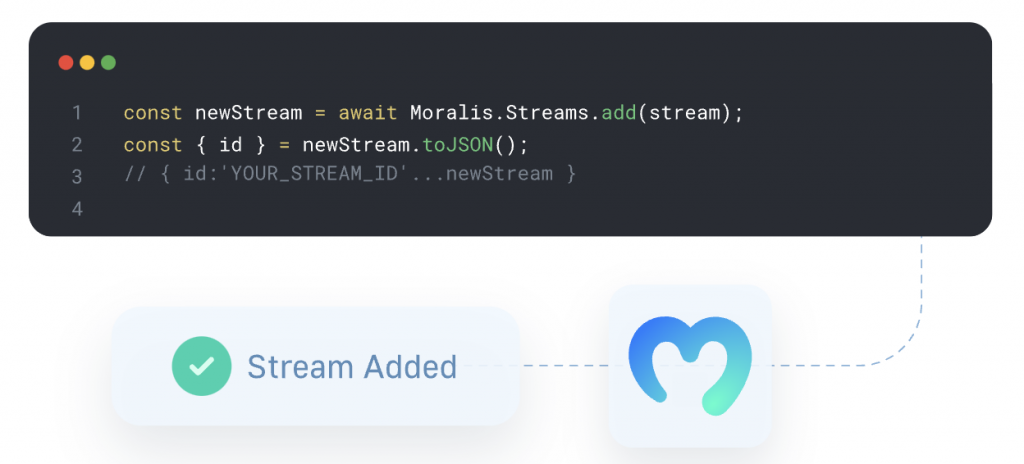
- Add one or several addresses and watch your data stream in:
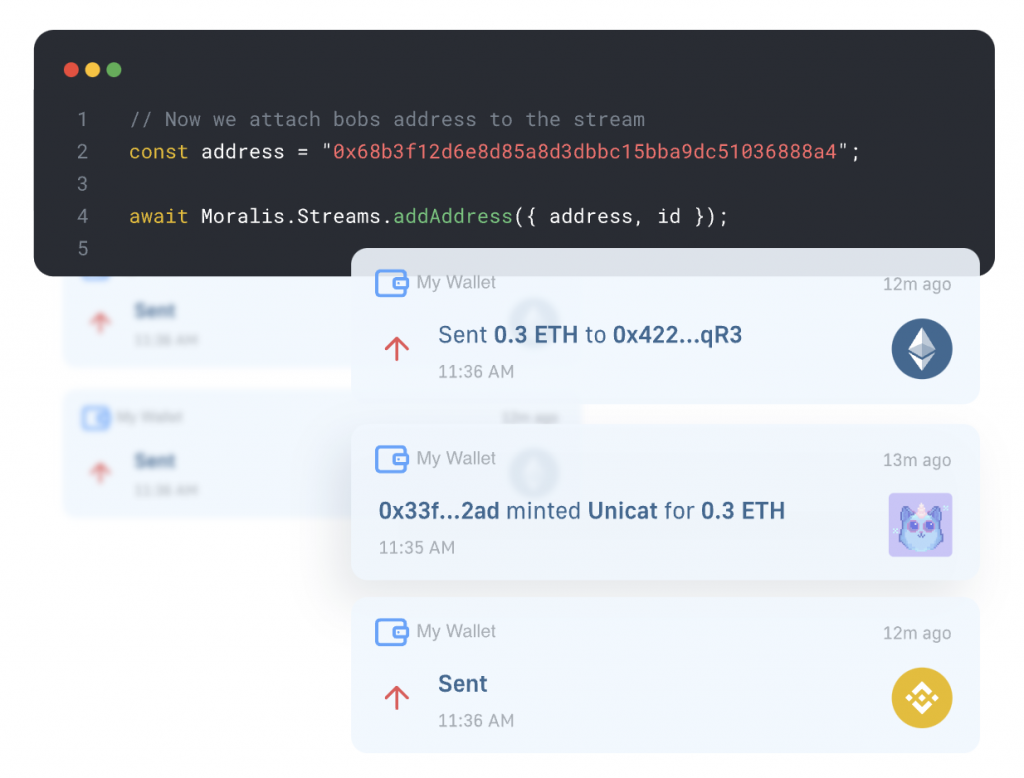
If you’d like to explore the interfaces above and our full ETH API suite in further detail, please check out our official Web3 API page!
Also, are you aware that you can access all these tools for free? As such, if you haven’t already, sign up with Moralis right now and start leveraging the full power of blockchain technology today!
Summary: The Ethereum Ecosystem in 2024
In today’s article, we kicked things off by diving straight into the Ethereum ecosystem in 2024. Doing so taught us that it’s the biggest platform for dapp and smart contract development. In fact, Ethereum currently hosts over four thousand projects, 53 million smart contracts, and 96 million Web3 wallets with an ETH balance!
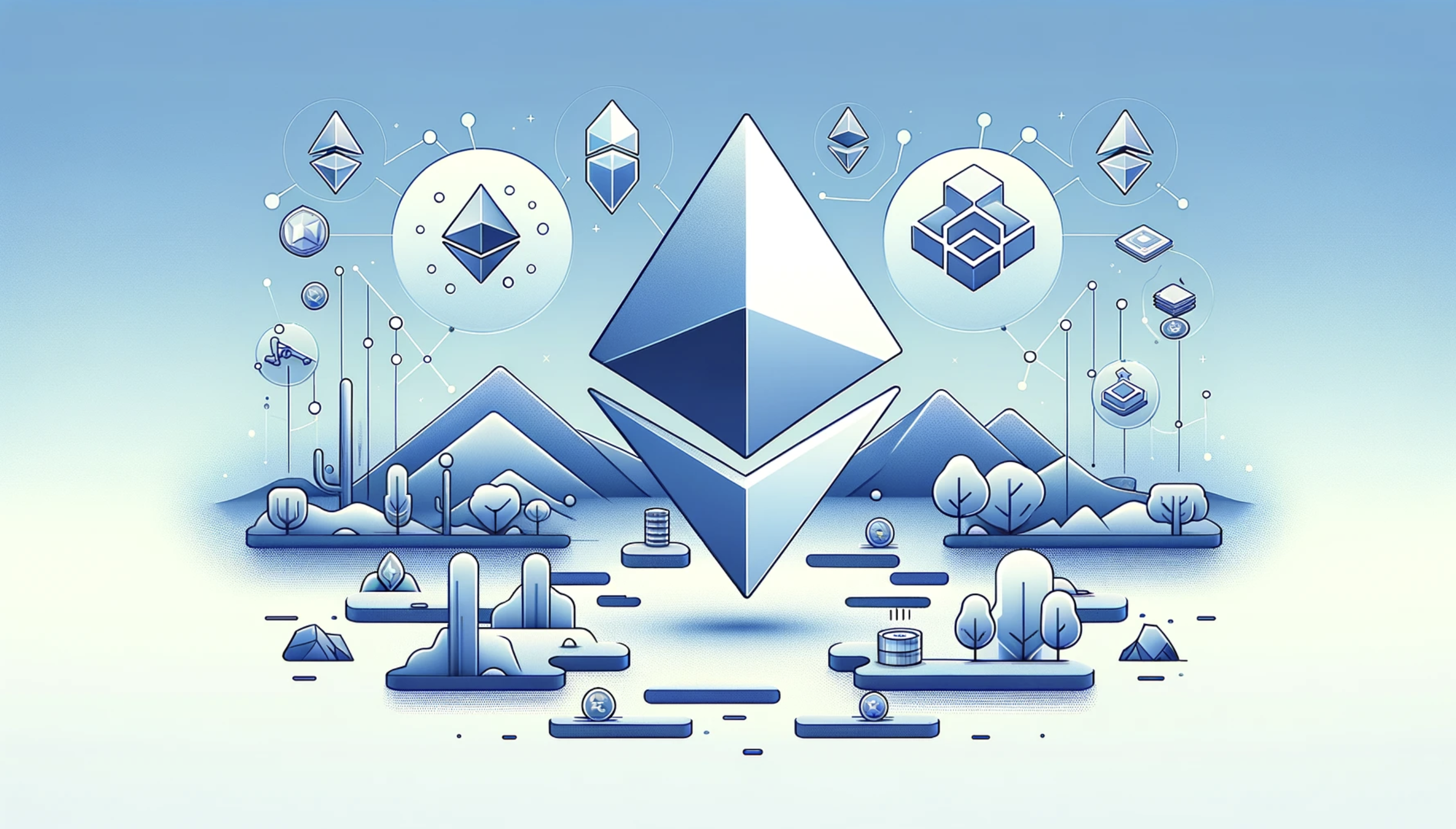
After exploring the ins and outs of Ethereum, we also listed ten of the most significant platforms built on the chain:
- Uniswap
- 1inch
- Curve Finance
- Lido
- OpenSea
- Blur
- MetaMask
- Rainbow
- Axie Infinity
- Illuvium
Lastly, to top things off, we dove into Ethereum development, where we introduced you to Moralis – the industry’s leading Web3 API provider!
If you liked this 2024 guide on the Ethereum ecosystem, consider checking out more content here at Moralis. For instance, learn what an MPC wallet is or dive into our complete list of DEXs.
Also, if you want to start building projects for the Ethereum ecosystem, don’t forget to sign up with Moralis. You can create an account for free, and you’ll get instant access to our ETH API suite!
Read More: moralis.io

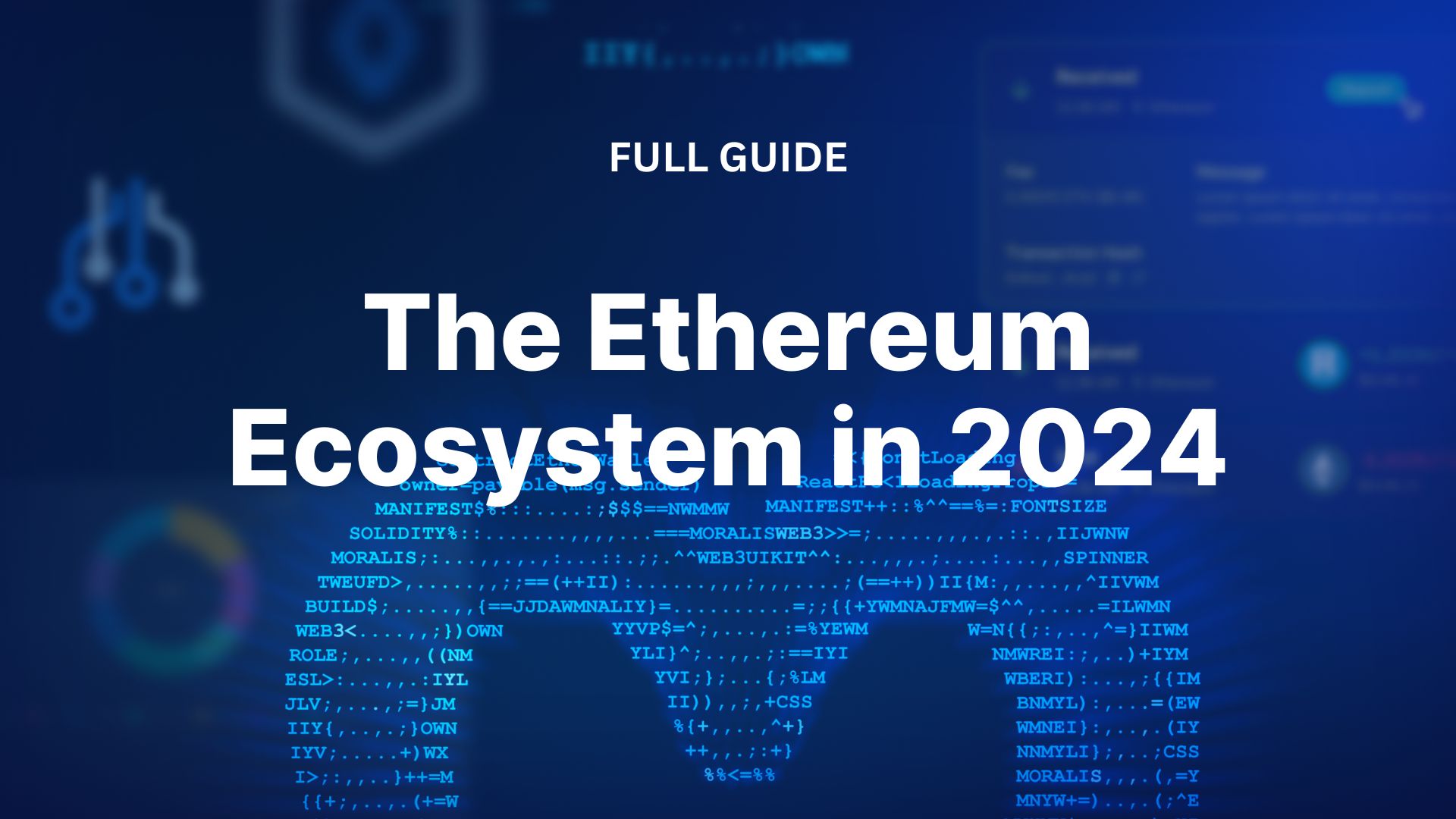


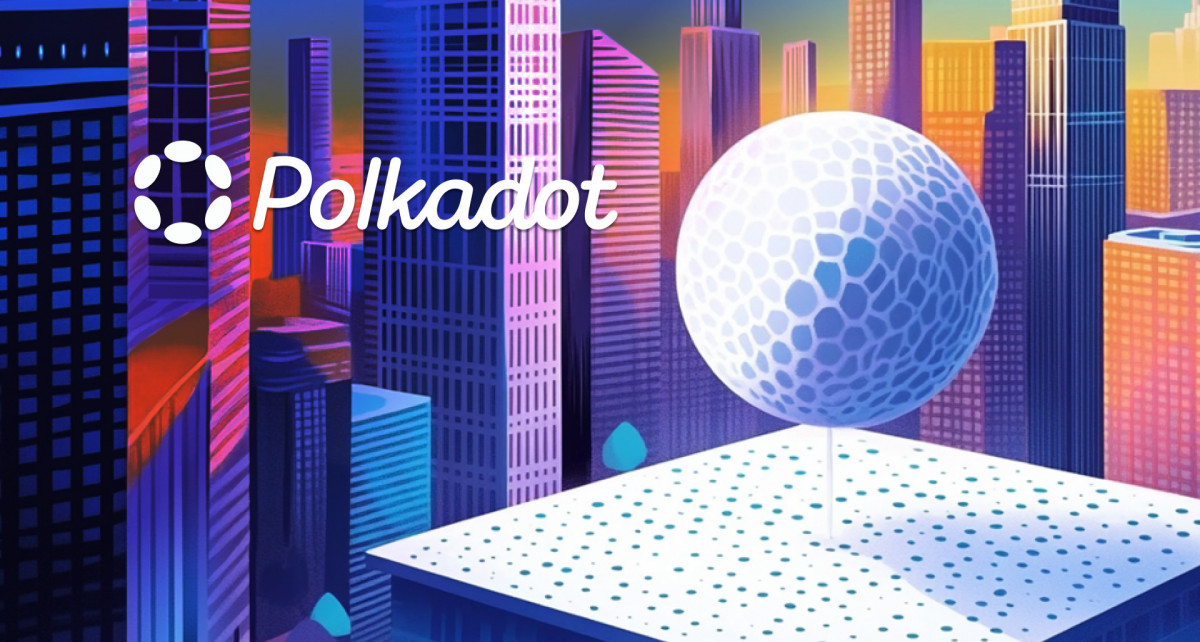
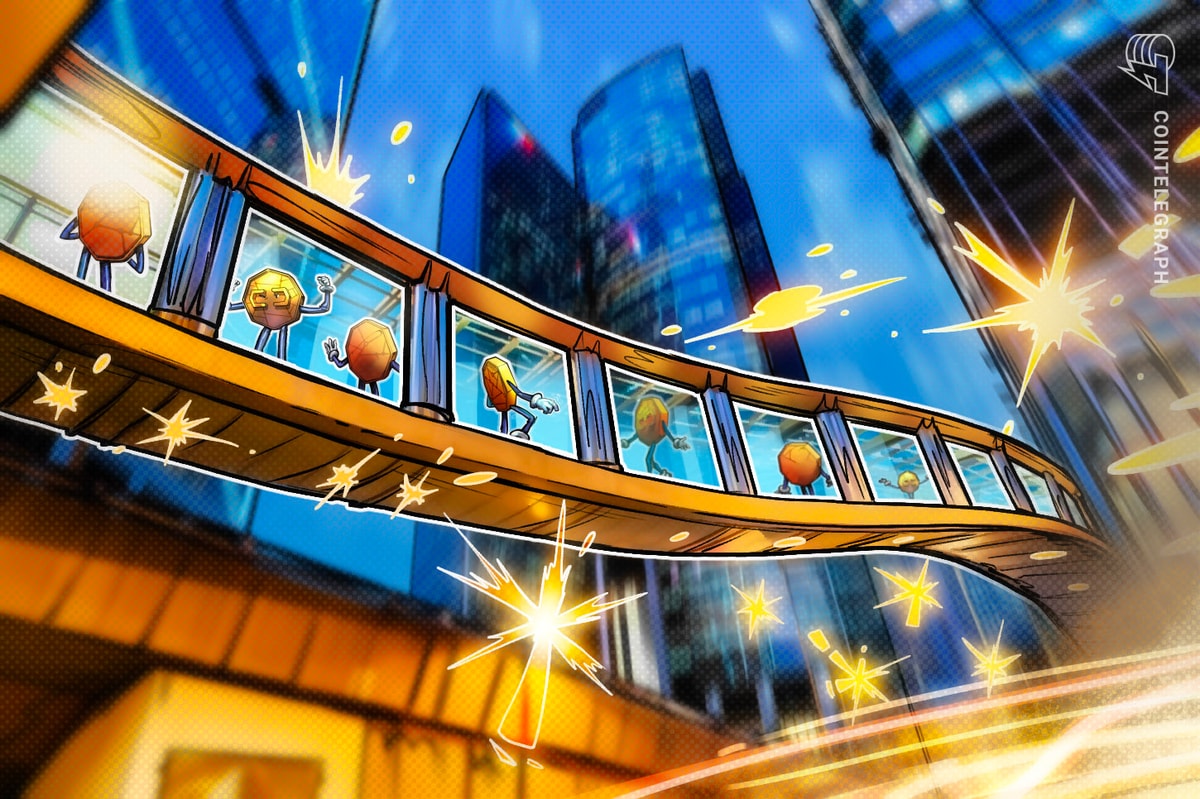



 Bitcoin
Bitcoin  Ethereum
Ethereum  Tether
Tether  XRP
XRP  Solana
Solana  USDC
USDC  Dogecoin
Dogecoin  TRON
TRON  Cardano
Cardano  Lido Staked Ether
Lido Staked Ether  Wrapped Bitcoin
Wrapped Bitcoin  Hyperliquid
Hyperliquid  Wrapped stETH
Wrapped stETH  Sui
Sui  Chainlink
Chainlink  Avalanche
Avalanche  Stellar
Stellar  LEO Token
LEO Token  Bitcoin Cash
Bitcoin Cash  Toncoin
Toncoin  Shiba Inu
Shiba Inu  USDS
USDS  Hedera
Hedera  WETH
WETH  Wrapped eETH
Wrapped eETH  Litecoin
Litecoin  Polkadot
Polkadot  Binance Bridged USDT (BNB Smart Chain)
Binance Bridged USDT (BNB Smart Chain)  Monero
Monero  Ethena USDe
Ethena USDe  Bitget Token
Bitget Token  Pepe
Pepe  Pi Network
Pi Network  Coinbase Wrapped BTC
Coinbase Wrapped BTC  WhiteBIT Coin
WhiteBIT Coin  Aave
Aave  Uniswap
Uniswap  Dai
Dai  Ethena Staked USDe
Ethena Staked USDe  Bittensor
Bittensor  Aptos
Aptos  OKB
OKB  Cronos
Cronos  NEAR Protocol
NEAR Protocol  BlackRock USD Institutional Digital Liquidity Fund
BlackRock USD Institutional Digital Liquidity Fund  Internet Computer
Internet Computer  Jito Staked SOL
Jito Staked SOL  Ethereum Classic
Ethereum Classic  Ondo
Ondo